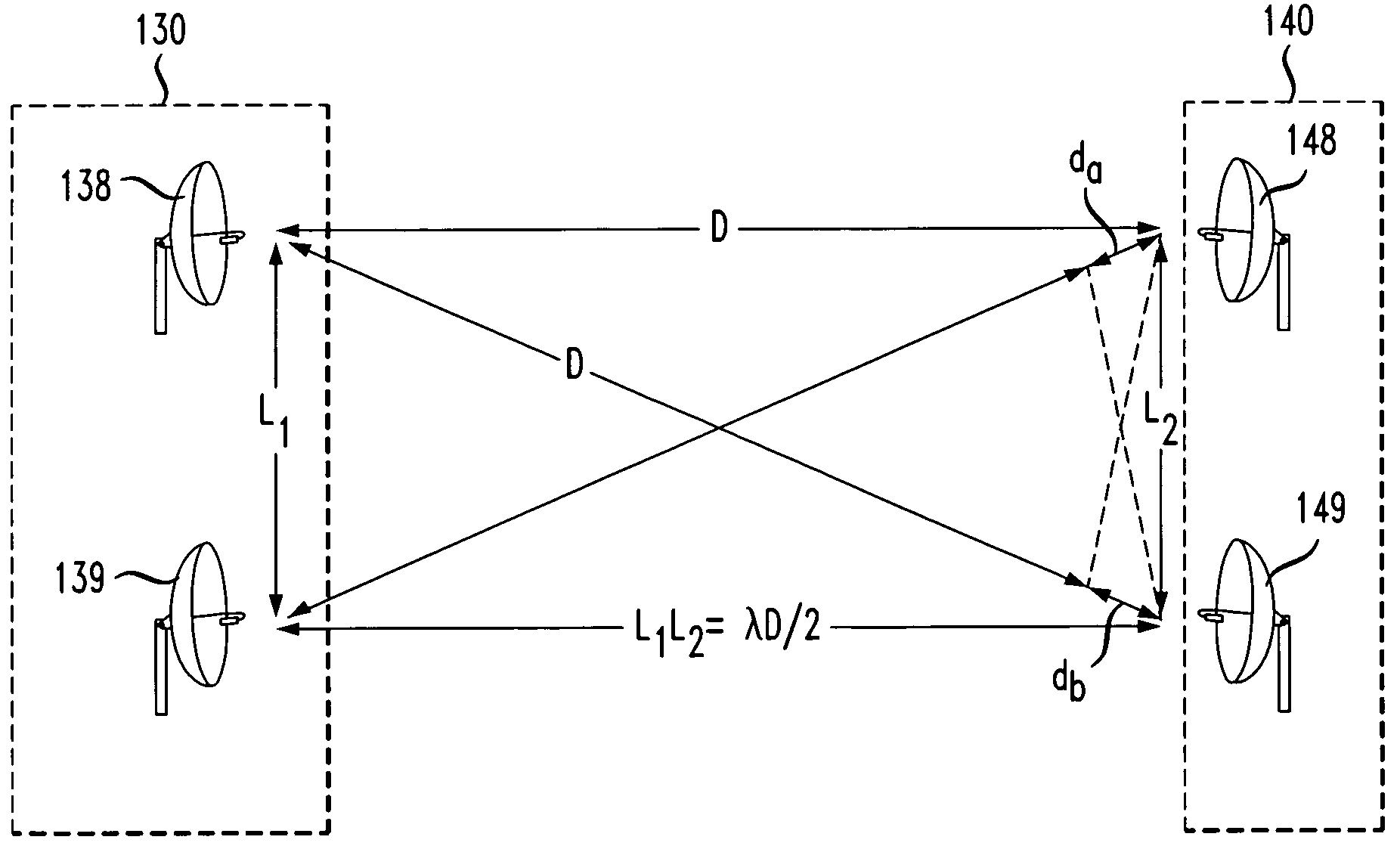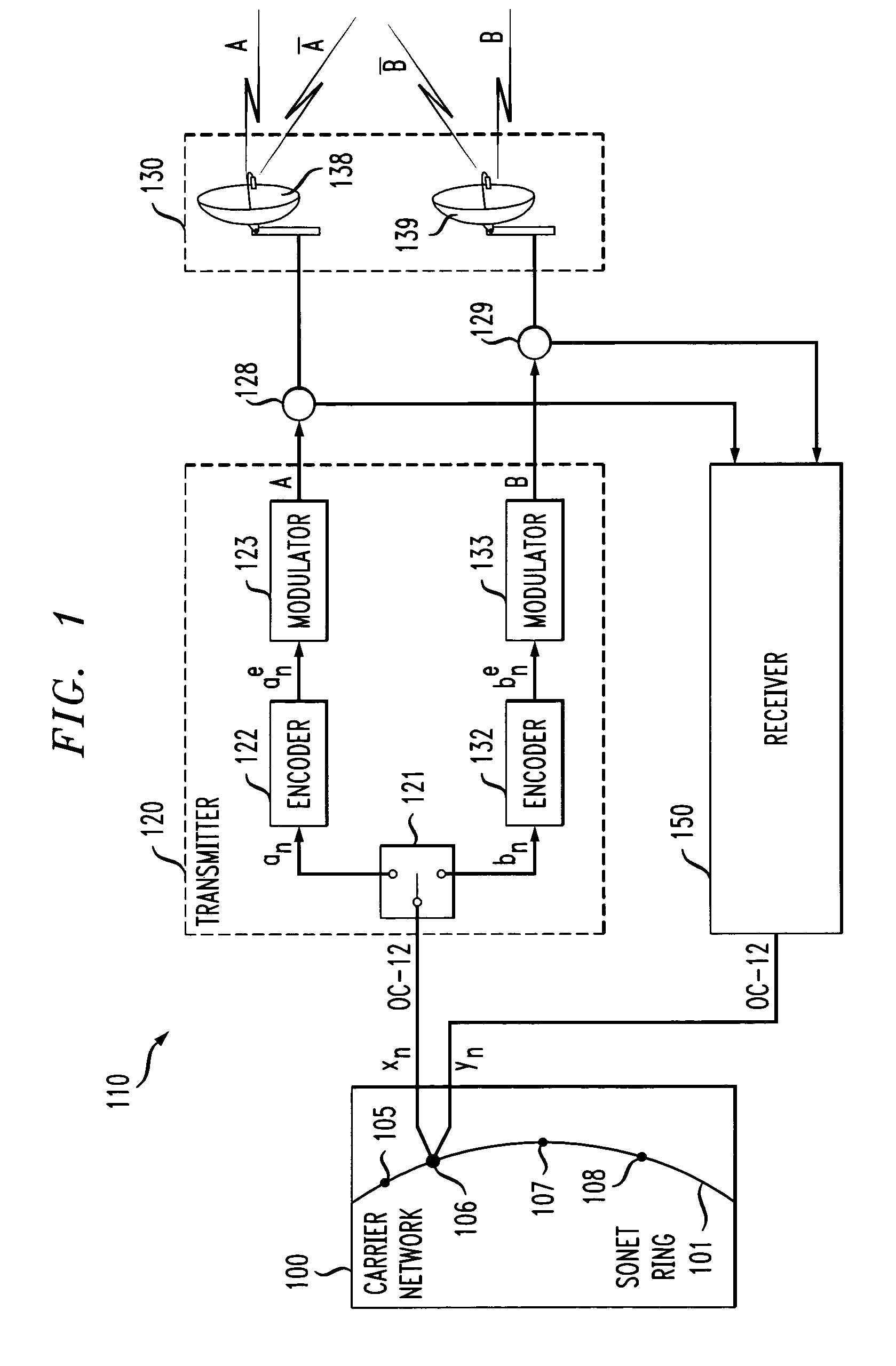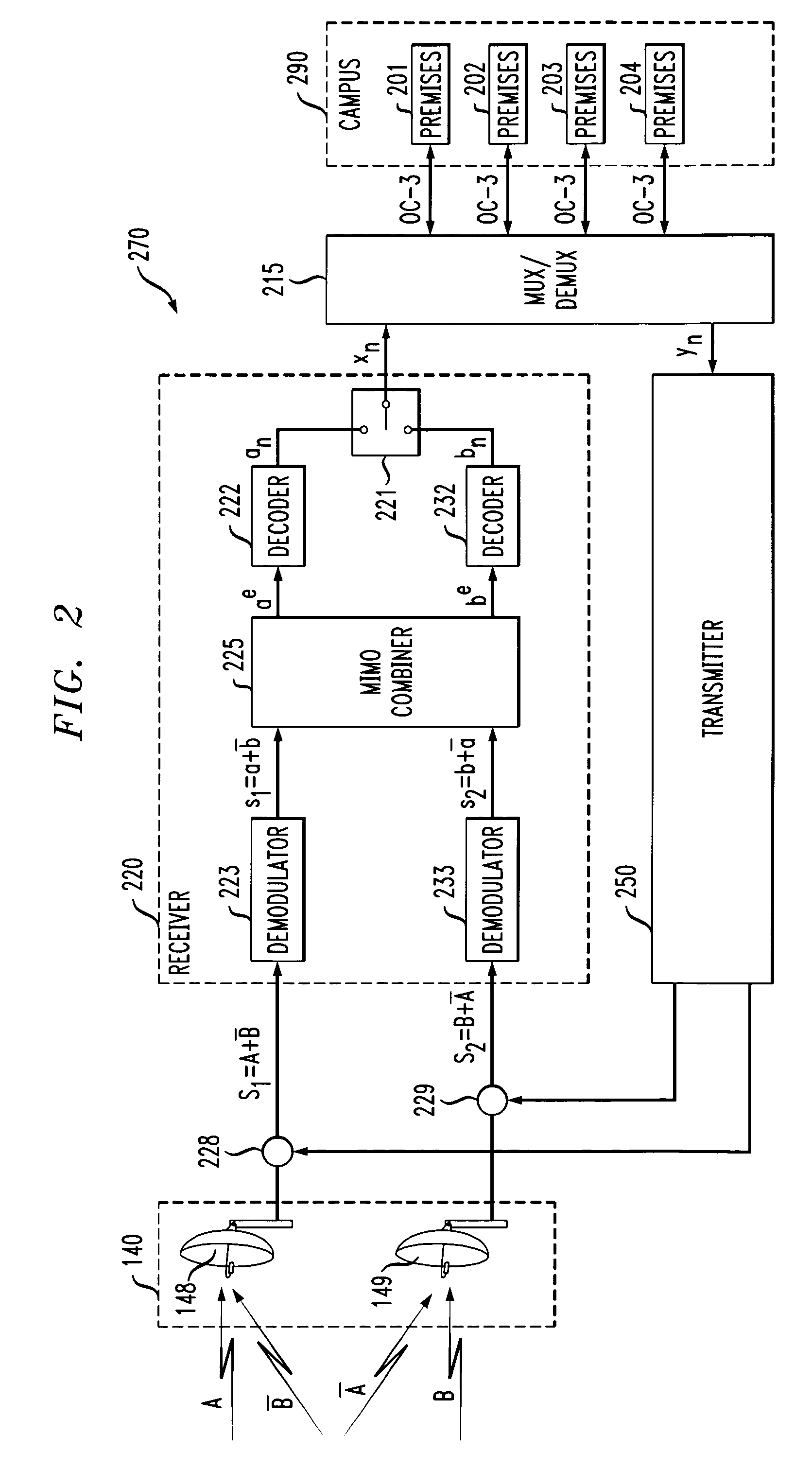High-speed two-way point-to-point transmission
a transmission and point-to-point technology, applied in power management, power management, diversity/multi-antenna systems, etc., can solve the problems of not being the focus of those working on mimo technology, and not being new to the field of high-speed two-way point-to-point transmission, so as to maximize the signal-to-noise ratio of each signal
- Summary
- Abstract
- Description
- Claims
- Application Information
AI Technical Summary
Benefits of technology
Problems solved by technology
Method used
Image
Examples
Embodiment Construction
[0016]The arrangement shown in FIGS. 1-2 includes a service provider's carrier network 100 having optical communication paths and equipment including SONET ring 101. The latter has nodes 105 through 108. It is desired to communicate the bit stream contained within a 622 Mb / s OC-12 signal xn appearing at node 106 (hereinafter referred to as an OC-12 bit stream) to individual enterprise customer premises 201 through 204 which are in relatively close proximity to one another within, for example, a corporate campus 290 that is located at a distance from node 106—illustratively between about 1.5 to 8 kilometers. To this end, the 622 Mb / s OC-12 signal is applied to a transmitter 120 of a transceiver 110 installed in, for example, a utility room or in an outdoor enclosure near antenna system 130 described below. Within transmitter 120, a demultiplexer 121 divides the OC-12 bit stream xn into two bit, or data, streams an and bn. Bit stream an is channel-encoded by encoder 122. Encoder 122 i...
PUM
 Login to View More
Login to View More Abstract
Description
Claims
Application Information
 Login to View More
Login to View More - R&D
- Intellectual Property
- Life Sciences
- Materials
- Tech Scout
- Unparalleled Data Quality
- Higher Quality Content
- 60% Fewer Hallucinations
Browse by: Latest US Patents, China's latest patents, Technical Efficacy Thesaurus, Application Domain, Technology Topic, Popular Technical Reports.
© 2025 PatSnap. All rights reserved.Legal|Privacy policy|Modern Slavery Act Transparency Statement|Sitemap|About US| Contact US: help@patsnap.com



